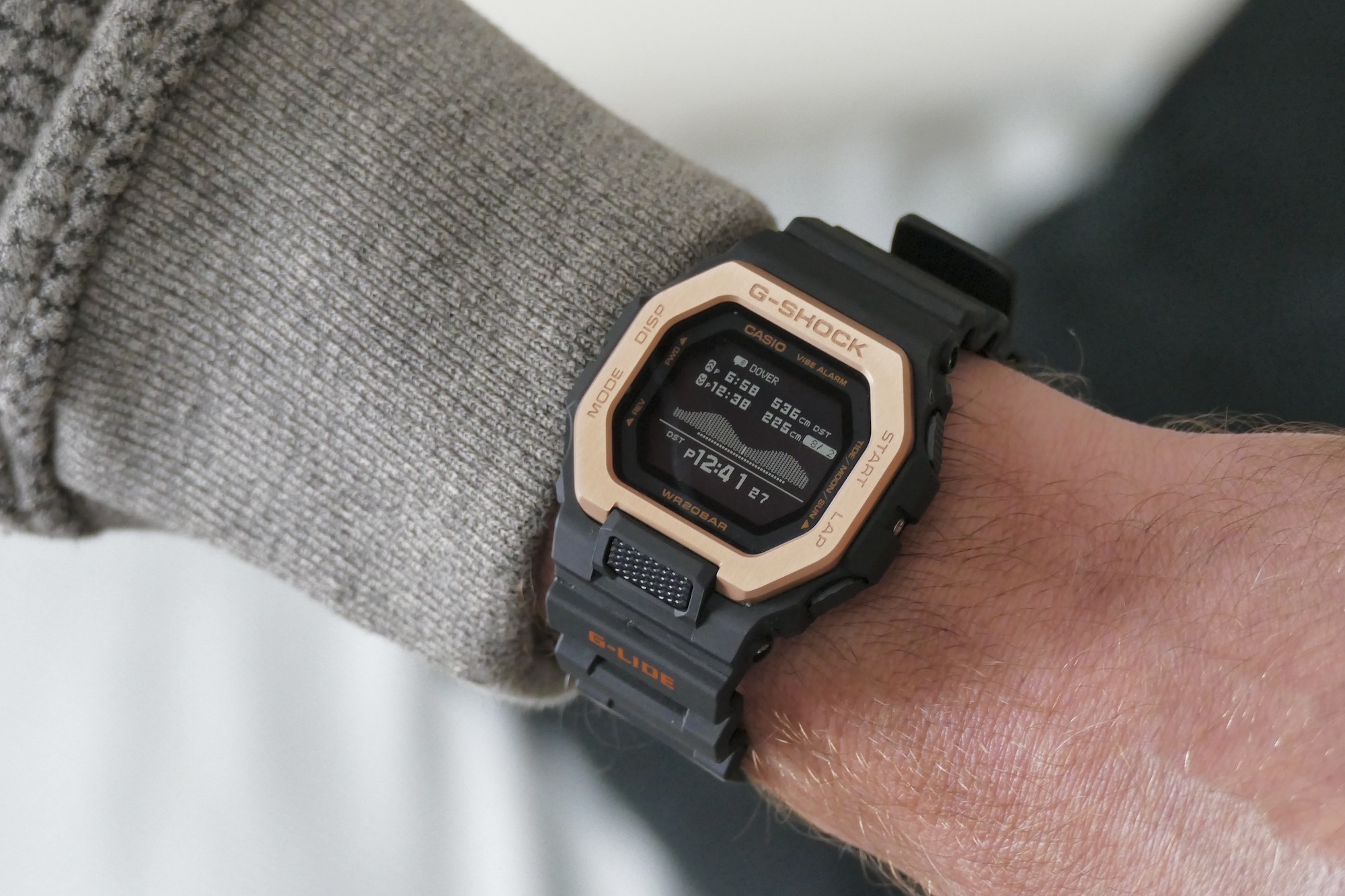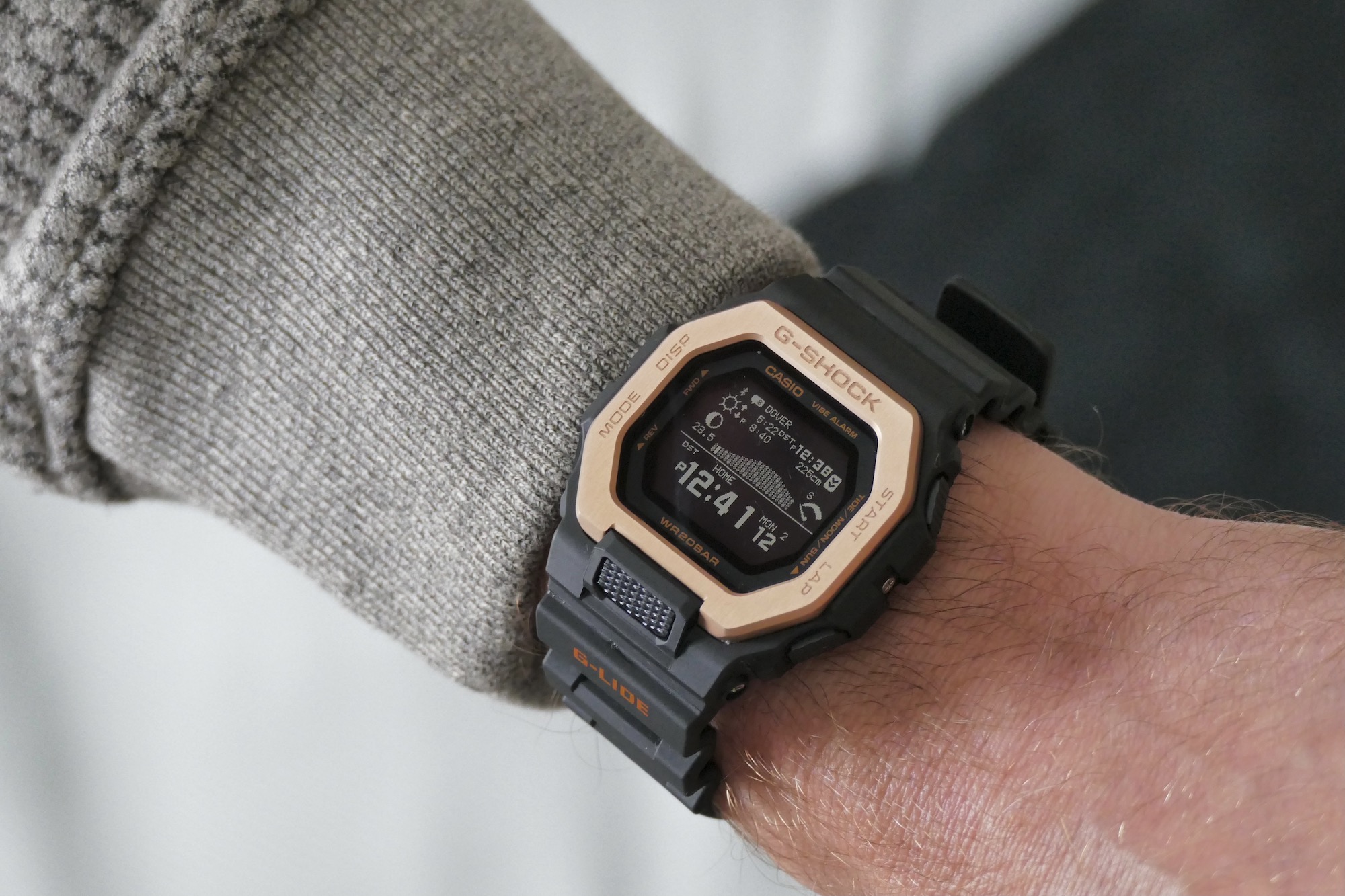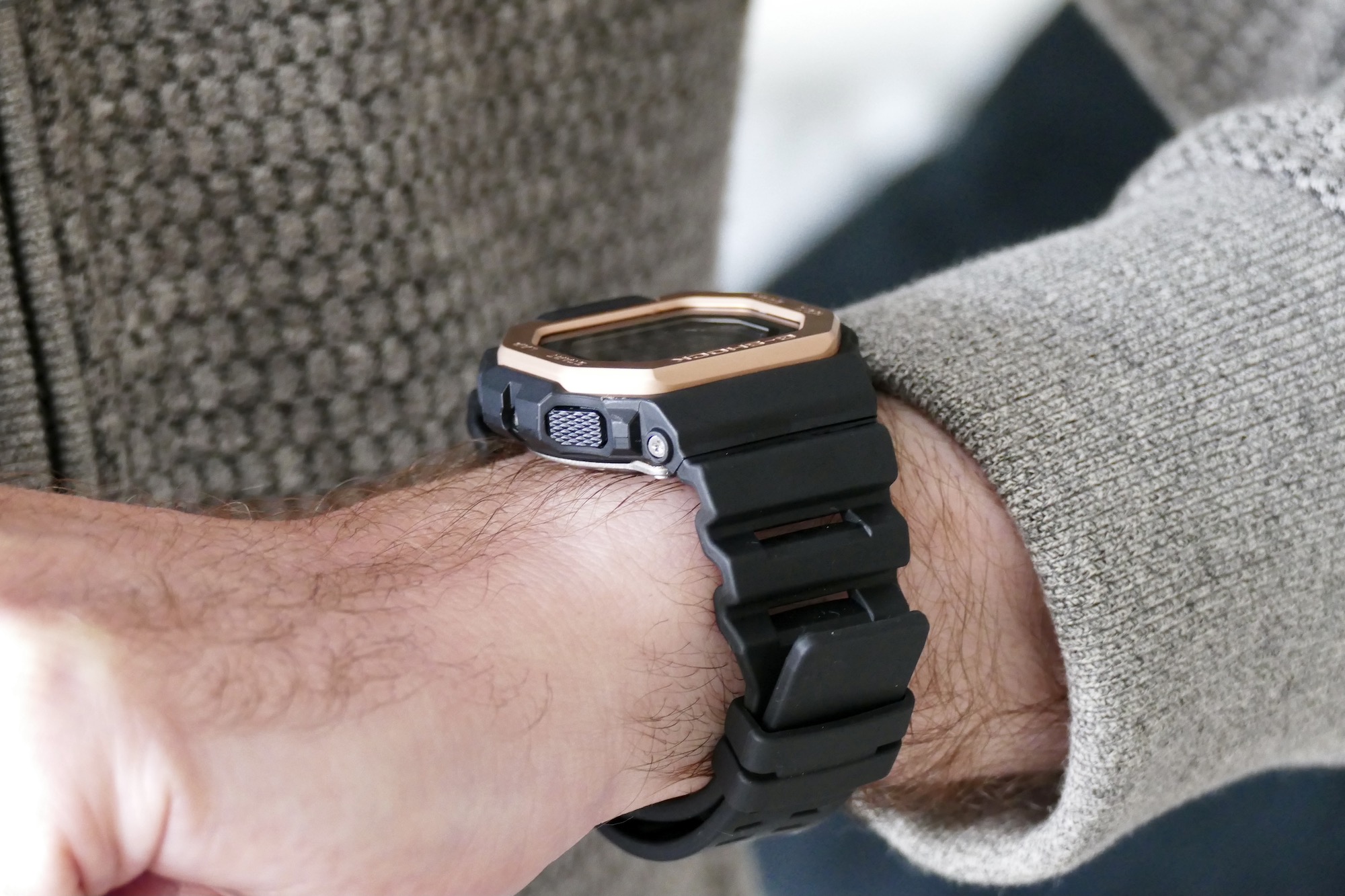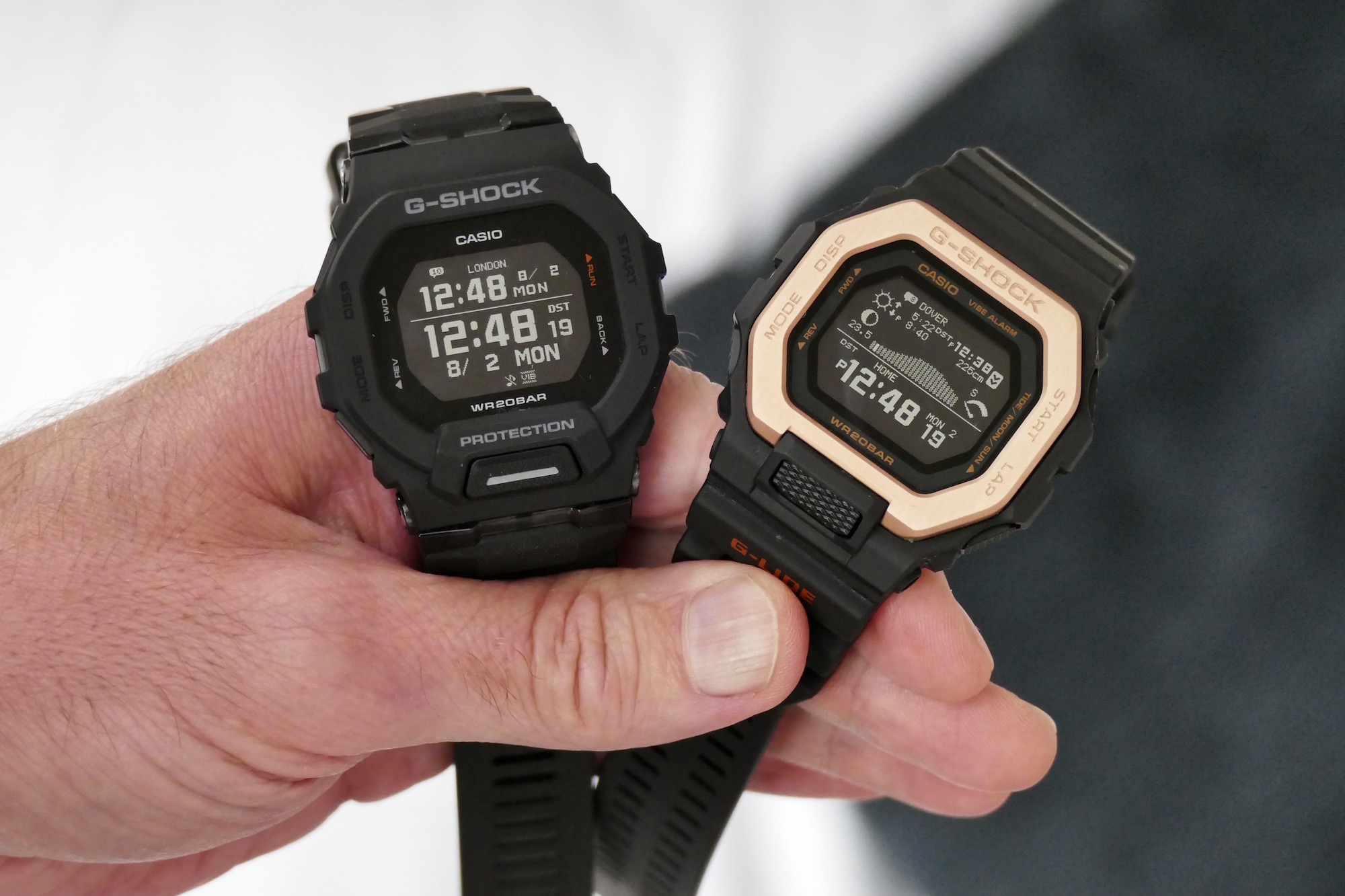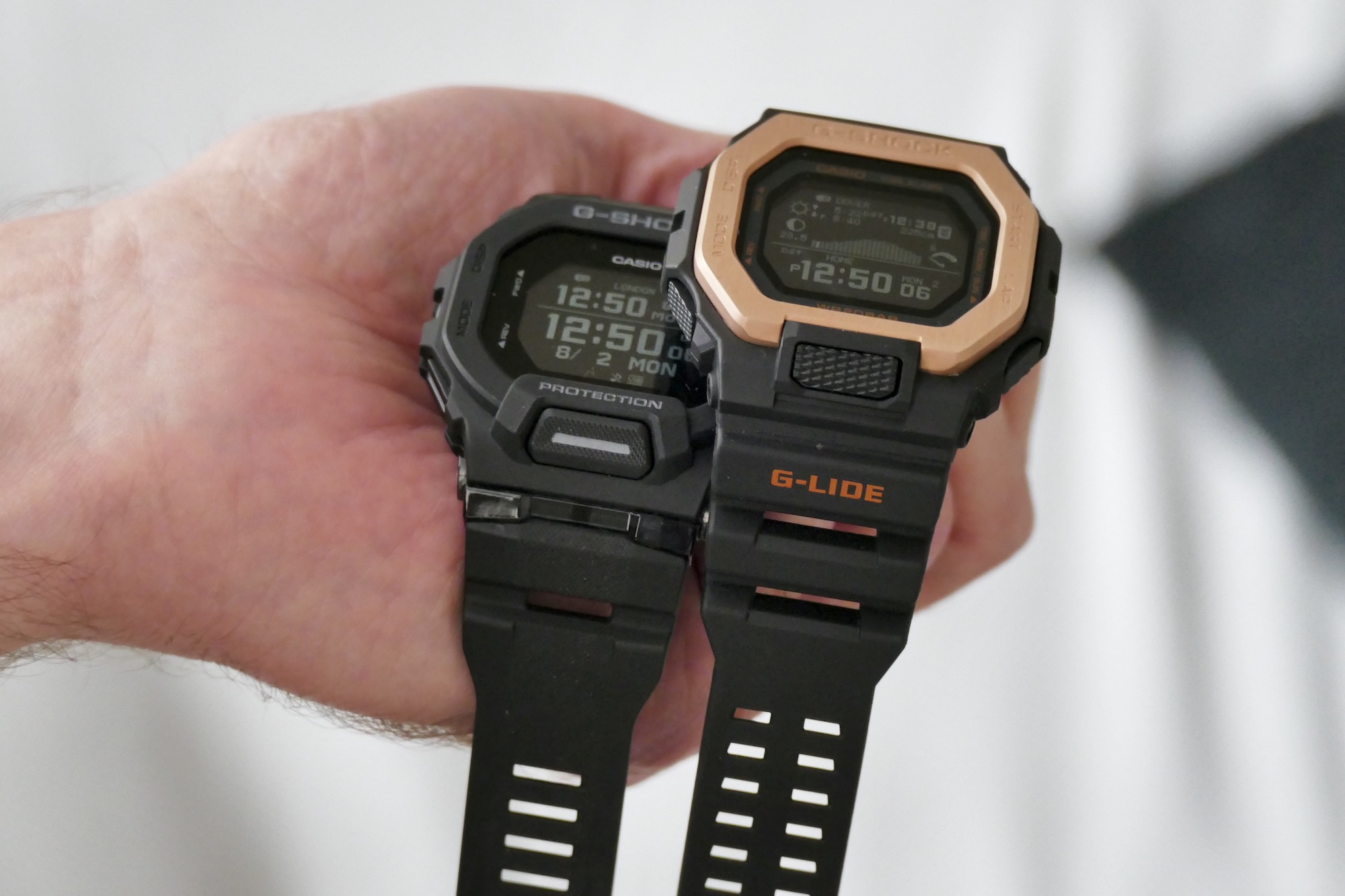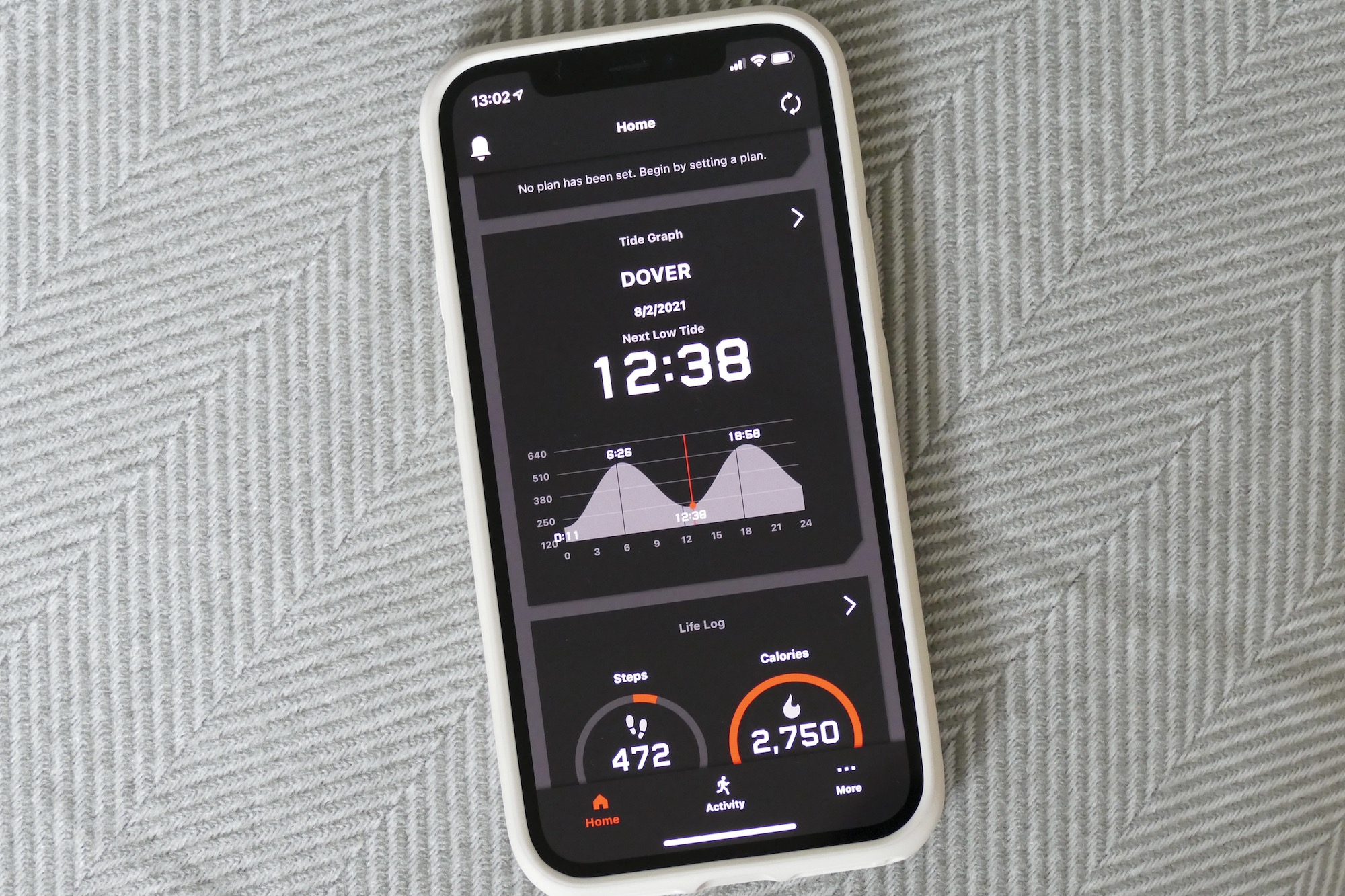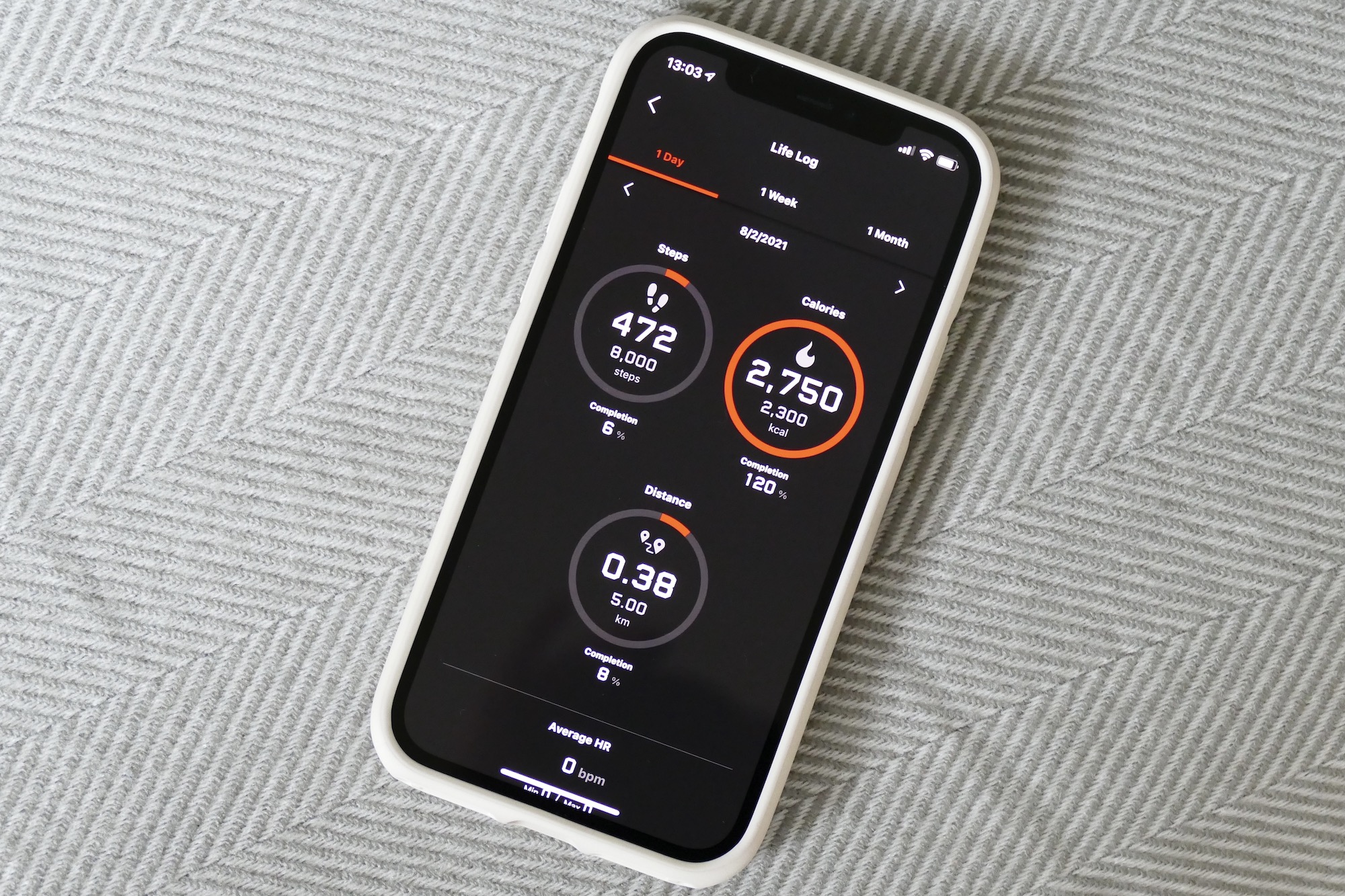The G-Shock G-LIDE GBX-100NS you see here is primarily aimed at surfers and people into other water sports, such as rowing or swimming, as it comes with tide data, sunrise and sunset information, and a lot more. But don’t for one minute think just because you don’t do any of these activities, the watch won’t be for you.
Casio’s actually doing what the smartwatch industry needs most: Providing you with a choice of designs. The GBX-100NS is technically very similar to the G-Shock GBD-200 I reviewed recently and a great example of how the brand continues to integrate simple, useful fitness tech into its durable, traditional watches. Let’s take a closer look at how it differs and why it matters.
No, you don’t need to surf
I don’t dive, but I own and love way too many dive watches. I also don’t surf, but I’ve happily worn the GBX-100NS for the past couple of weeks and never felt like I’m either not exploiting its features or being overwhelmed by information I don’t need or understand. Simply put, the GBX-100NS’s surf credentials are only there if you want them.

What do you get? Information on high and low tide times and levels, a tide graph, moon phase data, plus sunset and sunrise times. Using the G-Shock Move app you can access tide data from 3,300 different locations around the world. It’s all shown on the watch itself and easily scrolled through using the Lap button. If your favorite spot isn’t listed in the app, coordinates can be added manually, but this is not a fast process.
If you’re not a surfer or don’t regularly look at tide data, the information shown may not mean much. However, I liked seeing the sunrise and sunset times, and if I happen to be at the beach the tide times may come in handy even if I wasn’t planning to ride the waves. Some of the more in-depth data isn’t easy to interpret if you’re not familiar with it though.
If you don’t need all this, then what you’re left with is a GBD-200 hybrid smartwatch with a different design. That means the step tracker, run tracking, interval training, notifications from your phone, stopwatch, and phone finder are all there and managed through the Move app or the watch’s menu system. It’s all identical to the GBD-200, so check our full review of that watch for a closer look.
It may not sound like it at first, but this is a big deal, as the GBD-200 is an excellent hybrid smartwatch, but the design may not appeal to everyone. The GBX-100NS goes in a slightly different direction, yet still offers the same excellent features. I don’t surf, but I’d probably choose a GBX-100NS model over the GBD-200 because I prefer the style. Having the choice to do so is very welcome indeed and is what makes G-Shock’s growing range of hybrid watches so exciting.
Wearing the GBX-100NS
The GBX-100 was first released a year ago, but the new GBX-100NS — the NS stands for Night Surfing — models are less sporty looking and are therefore more versatile. There are two versions, the GBX-100NS-4 seen here with a bronze stainless steel bezel, and the GBX-100NS-1 with a black ion-plated bezel. Both have a neat hairline finish. The five buttons on the resin case have a grippy texture and take a little bit of force to press.
I love the resin band on the GBX-100NS. It’s very supple, more so than the GBD-200’s, and is secured using a two-pin clasp for extra security, plus the double hole design provides greater water drainage than a non-surf watch. There are plenty of holes so it not only suits all wrists but can easily be worn over a wetsuit, too. It’s really comfortable, but I’d have liked to see the wrist guards fitted to the GBD-200 used here as well, as they are great at keeping the watch centered on your wrist.

It uses a Memory in Pixel Screen (MIPS) LCD, which is crisp and really bright, and I’ve had no problem reading it in sunlight or lowlight. The cool negative style — grayish text and numbers on a black background — looks excellent, and the backlight adds a soft blue sheen to the entire screen for better visibility in darkness.
Is it a smartwatch?
No, the GBX-100NS isn’t a smartwatch, it’s a hybrid watch and a very good one. The connected features are pitched just right for people who value good watch design and durability over a touchscreen and apps. The lightweight 66-gram watch is really comfortable to wear, the step counter and run/walk-focused fitness tracking provide basic, accurate insight into your activity levels, and the notifications show enough information to understand if you need to pick up your phone.

The GBX-100NS is shock-resistant, has scratch-resistant mineral glass over the screen, and is water-resistant to 200 meters. There’s no need to charge the watch’s battery, and although there’s no solar charging, the internal battery should last for a year or two, depending on your use of the connected features.
Notifications are reliable and accompanied by either a beep or a vibration, which can be specified in the menu. You do have to dig through various screens and push buttons way too many times to see more detail, but I rarely found the need to do this. I could get most of what I needed to know from the initial alert, then use my phone. You can’t interact with messages anyway.
I’ve used the watch connected to an iPhone 12 Pro. The Bluetooth range is modest, and it did sometimes have trouble reconnecting instantly after losing signal. Notifications cleared on the watch do not clear them on your phone. The Move app has a decent design, but the menus are sometimes dull and a little complicated, there’s no obvious way to do things like set a daily activity goal. Adjusting settings can be ponderous, too.
However, a lot of what you do with the app is a one-time thing. Once you’ve set preferences, the world time, daily targets, and the tide graph, chances are you’ll leave the app alone, so its niggles don’t get frustrating. Remember, this is a hybrid watch, not a full touchscreen smartwatch, and you buy it more for the watch than for the app.
Not a smartwatch, not only for surfers
Is the GBX-100NS not being a smartwatch and not really only for its ideal target audience a downside? Not at all, it’s a good thing. The G-LIDE GBX-100NS takes everything I liked about the GBD-200 and puts it into what I think is a better-looking case, that’s less sporty than the previous models.

Casio’s starting to exploit its ability to integrate its Bluetooth connection and fitness tracking software in a choice of designs, colors, and shapes. Although the GBX-100NS isn’t drastically different from the GBD-100, the alterations are sufficient to attract different people. Rather than only thinking about if you’ll ever use the tide graph feature that separates the GBX-100NS from other G-Shocks, you should also be thinking about whether the style and colors suit your outfits and lifestyle. If it doesn’t, the GBD-200 or the GBD-H1000 may suit you better.
Choice is essential when it comes to wearable tech, and Casio is beginning to provide plenty of it. The G-Shock GBX-100NS is available to buy now for $180 from G-Shock U.S., or 159 British pounds from G-Shock U.K., in a variety of colors including the first models launched in early 2020.
